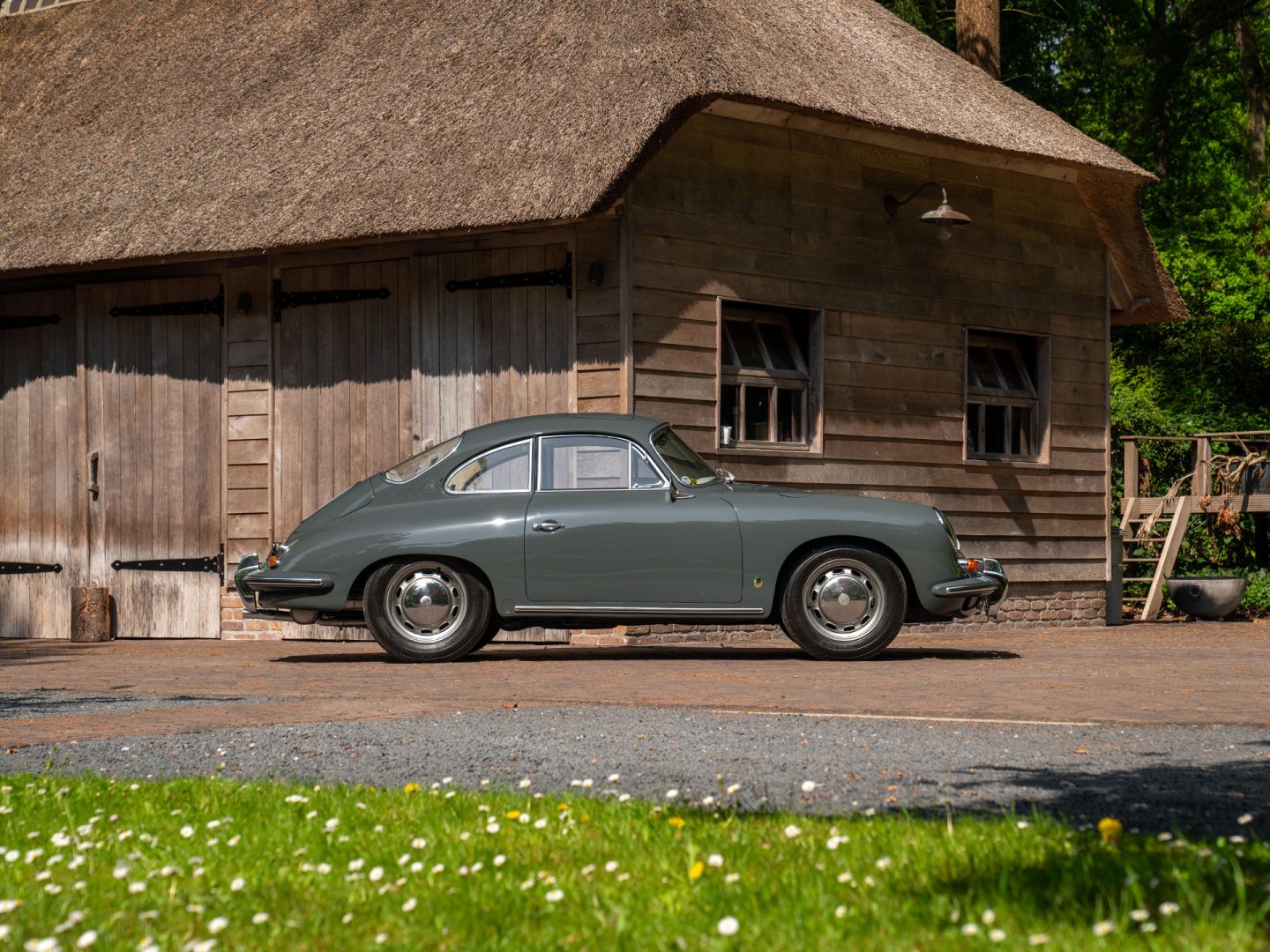Volledig origineel met matching numbers, nieuw in Nederland geleverd door de firma PON en compleet gerestaureerd; mooier dan deze Porsche 356 C 1600 gaat het niet worden! Wat de iconische 911-voorganger nóg unieker maakt is zijn zeldzame Dolphin Grey lakwerk gecombineerd met een open dak; beide bijzondere fabrieksopties van Porsche in de sixties. De afgelopen jaren werd de ultieme Porsche klassieker gekoesterd door een Nederlandse verzamelaar, van wie wij de 356 C recentelijk mochten inruilen. Een geweldige eer, maar voor wie zich straks de volgende eigenaar mag noemen van deze parel, is de eer nog vele malen groter.
Read morePorsche 356 C 1600 Dolphin Grey
Fully original with matching numbers, delivered new in the Netherlands by PON and completely restored—this Porsche 356 C 1600 truly doesn’t get any better. What makes this iconic predecessor to the 911 even more unique is its rare Dolphin Grey paintwork combined with a factory sunroof—both exceptional options offered by Porsche in the sixties. In recent years, this ultimate Porsche classic was cherished by a Dutch collector, from whom we were recently honoured to acquire it. An incredible privilege, yet one that pales in comparison to the honour awaiting its next proud owner.
History
Not the 911, but the Porsche 356 is the original blueprint of the 911. Confusing? Not at all. Back in 1948, the 356 became Porsche’s very first production model. With its rear-mounted engine, rear-wheel drive and low weight, it was revolutionary in the sports car segment. Much like the 911 today, the 356 evolved gradually over its lifespan. For instance, the “pre-A” models already differed subtly from the first 50 examples produced in Gmünd, Austria. By 1950, production moved to Zuffenhausen, and in 1955 Porsche launched the 356 A models, which came with a minimum engine size of 1.3 litres—up from 1.1—and a top variant boasting a 1.6-litre engine instead of 1.5. From the 356 B “T6” onwards (1960), 1.6 litres became standard and visual updates became more pronounced. In 1964, the model received its third and final facelift, becoming the 356 C. After the 356, the baton was passed to the 911—its most notable difference being the name, as the layout remained essentially unchanged.
This specific example is a 1964 356 C Coupé with a 1600 engine, placing it among the last of its kind. Just one year later, production of this legendary model ceased, paving the way for a new icon: the 911. What makes our 356 C 1600 truly stand out is its combination of provenance, originality and condition: it was delivered new in the Netherlands by importer PON. Matching numbers are documented on the official certificate included. It briefly made its way to the United States for a complete restoration—preserving all original components and details—before being brought back to the Netherlands by a passionate enthusiast and collector. The rest, as they say, is history.
Exterior
Finding a Porsche 356 C in such outstanding condition is a rarity. Add the rare Dolphin Grey paint and the factory sunroof, and you have a car that’s truly one of a kind. The beefed-up bumpers—partially body-coloured with chrome accents—subtly revised front and rear light units, and dual cooling vents on the engine lid distinguish the 356 B from the earlier A models. The 356 C added amber glass rear indicators. Beyond that, most changes were technical. Interestingly, shades similar to classic Dolphin Grey are highly sought-after among today’s 911s. History, it seems, repeats itself. As does the design: even after 77 years, the round headlights, sloping roofline and pronounced rear wheel arches remain iconic. The silhouette of the 356 and 911 is unmistakable, helping the model grow through the generations into the phenomenon we know today. A 356/911 isn’t just a Porsche. It’s Porsche.
Interior
The immaculate condition and elegant grey tones continue inside our 356 C Coupé. The colours may be lighter, but the sense of quality in the cockpit is every bit as present. It feels like a time capsule—and a genuine 2+2, just as we know it from the 911. A set of analogue dials with the rev counter front and centre—still a trademark of today’s 911s—sits in front of the driver. The wooden steering wheel with three aluminium spokes and the body-coloured glove box lid, however, are clear signs of an earlier generation. These details only enhance its appeal—because they just don’t build them like this anymore.
Technical
The strongest asset of Porsche classics? The engineering—air-cooled, of course. The number of cylinders grew from four to six between the 356 and the 911, but the boxer layout remained unchanged. In the case of the Porsche 356 C 1600, the 4-cylinder boxer engine produces 75 hp. Thanks to a low kerb weight of just 858 kg and rear-mounted engine and drivetrain, the car’s sporty, playful DNA is immediately apparent. Furthermore, this powertrain is renowned for its exceptional reliability. And then there’s the sound—that unmistakable boxer rumble purists have come to miss since the introduction of water-cooled engines. Ready to relive the golden age?
Kind regards,
Team Prins
